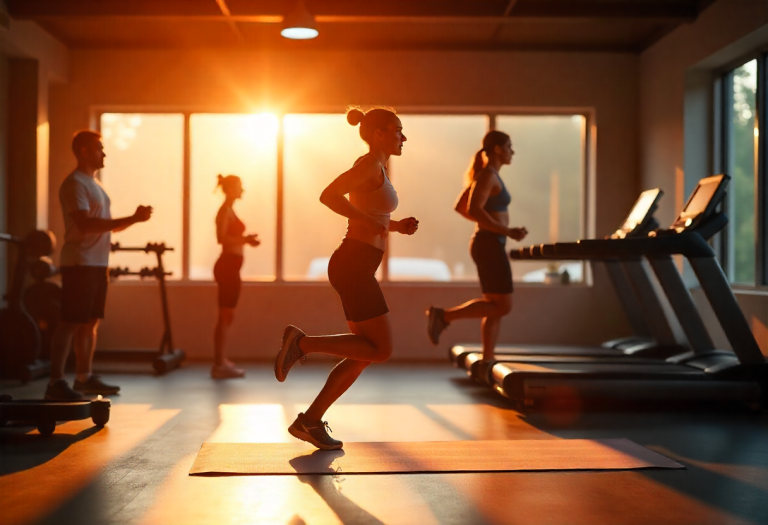When it comes to fitness, the goal is not just about hitting the gym or running a certain distance; it’s about committing to a lifestyle that supports your health, well-being, and goals. Whether you’re a fitness beginner or an experienced athlete, the right workout routine is key to achieving results. In this article, we’ll dive into effective workouts that can help you progress at any fitness level, providing the structure you need to optimize your fitness journey.
Understanding Your Fitness Level
Before diving into any workout routine, it’s important to understand where you currently stand in terms of fitness. Everyone starts at a different point, and that’s okay! Fitness is a journey, not a race.
1. Beginner:
If you’re just starting out, your focus should be on building a solid foundation with the basics: improving cardiovascular health, enhancing mobility, and developing strength. Beginner workouts should focus on mastering form, increasing endurance, and gradually building strength to avoid injury.
2. Intermediate:
If you’ve been working out for a few months or even a year, you’ve probably gained some muscle, endurance, and confidence. Intermediate workouts should now include more complex exercises, progressive overload (gradually increasing resistance or intensity), and compound movements that engage multiple muscle groups.
3. Advanced:
For those who are highly experienced and have mastered the fundamentals, it’s time to challenge yourself even further. Advanced workouts may include high-intensity interval training (HIIT), Olympic lifting, or other specialized forms of training like CrossFit or endurance running. The goal is to continually push your limits and build on your existing strength, agility, and power.
Effective Workout Routines for Every Level
Beginner: Full-Body Strength & Cardio
If you’re new to fitness, start with a balanced approach that combines both strength training and cardio. Here’s a simple workout to get you started:
Warm-Up (5–10 minutes)
Light cardio (e.g., brisk walking, jogging in place, or cycling)
Dynamic stretches (e.g., leg swings, arm circles, torso twists)
Workout (3 Sets)
Squats (12–15 reps) – Bodyweight squats to activate your legs and core.
Push-Ups (8–12 reps) – Start with modified push-ups (knees on the floor) if necessary.
Bent-Over Dumbbell Rows (10–12 reps) – Use light weights or water bottles to work the back.
Plank Hold (20–30 seconds) – Engage your core for stability.
Walking Lunges (10–12 reps per leg) – Step forward and lower your back knee toward the ground.
Cool-Down (5–10 minutes)
Light stretching or yoga poses (e.g., child’s pose, hamstring stretch, and quadriceps stretch).
This routine will help you build endurance, strength, and mobility while laying the groundwork for more advanced movements as you progress.
Intermediate: Compound Movements & Intensity
As you gain experience, you can start incorporating more advanced exercises and increase the intensity. Compound movements are highly effective as they work multiple muscle groups at once, burning more calories and increasing overall strength.
Warm-Up (5–10 minutes)
Moderate cardio (e.g., treadmill or bike at moderate intensity)
Dynamic stretching (e.g., walking lunges, shoulder rolls, hip openers)
Workout (4 Sets)
Deadlifts (8–10 reps) – A great compound movement for the back, hamstrings, and glutes.
Push-Ups (15–20 reps) – Regular push-ups or progress to decline push-ups to increase intensity.
Dumbbell Bench Press (8–10 reps) – Works the chest and shoulders.
Goblet Squats (12–15 reps) – Hold a dumbbell at chest level to add weight to the squat.
Mountain Climbers (30 seconds) – To elevate your heart rate and engage your core.
Russian Twists (15–20 reps per side) – For core stability and rotation.
Cool-Down (5–10 minutes)
Stretching focusing on flexibility and mobility for the hips, legs, and upper body.
This workout balances strength training with high-intensity exercises, making it ideal for building muscle and burning fat.
Advanced: HIIT & Strength Training
For advanced athletes, it’s essential to keep challenging your body. High-Intensity Interval Training (HIIT) and advanced strength training can help push you to the next level. These workouts incorporate explosive movements, heavy lifting, and minimal rest to build strength, power, and endurance.
Warm-Up (5–10 minutes)
Jump rope or high knees to get your heart rate up.
Dynamic stretching with more focus on mobility and range of motion.
Workout (5 Rounds)
Kettlebell Swings (20 reps) – Focus on powerful hip thrusts to engage your glutes and core.
Pull-Ups or Assisted Pull-Ups (8–10 reps) – If you can’t do pull-ups yet, use a resistance band for assistance.
Burpees (15 reps) – High-intensity full-body exercise for cardiovascular conditioning.
Barbell Squats (8–10 reps) – Perform with moderate to heavy weight to stimulate the legs and core.
Box Jumps (12 reps) – Explosive movement to improve power and coordination.
Plank with Shoulder Taps (30 seconds) – Engages the core and shoulders.
Cool-Down (5–10 minutes)
Static stretches focusing on your legs, back, and shoulders, holding each stretch for 30 seconds.
This workout is designed to maximize fat burning, improve cardiovascular endurance, and increase muscle strength. The combination of HIIT and strength training provides a full-body challenge that targets every major muscle group.
The Key to Progress: Consistency and Recovery
Regardless of your fitness level, the key to progress is consistency. Whether you’re starting with bodyweight exercises or lifting heavy weights, sticking with a routine and gradually increasing intensity is essential for long-term success.
Additionally, don’t underestimate the power of recovery. Rest days, proper nutrition, hydration, and sleep are all crucial elements of a balanced fitness routine. Overworking your body without allowing adequate recovery time can lead to injury and burnout.
Conclusion: Your Fitness Journey Starts Now
Fitness is not a destination but a journey. Whether you’re just getting started, hitting an intermediate level, or pushing your limits as an advanced athlete, the most important thing is to keep moving forward. Find a workout routine that aligns with your goals, and embrace the challenge of continuous improvement.
Remember, every workout counts, and with dedication, you will see progress over time. So, lace up those sneakers, grab your water bottle, and get moving—your best self is just around the corner.
